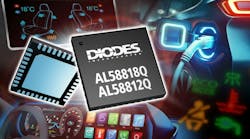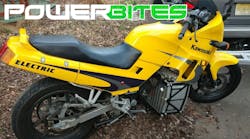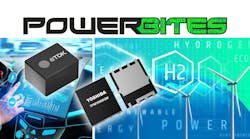High-Density Dual-Pack IGBT Modules Simplify System Integration
What you'll learn:
- Applications for DualPack 3 power modules.
- Variants of the modules in terms of voltage and current.
- Advantages of their robust packaging.
A new family of efficient and reliable DualPack 3 (DP3) power modules from Microchip Technology is intended to help designers create simpler, more compact, and cost-effective power-management solutions. Their high efficiency, compact footprint, and advanced protection features make suit them for industrial drives, renewables, traction, energy storage, and agricultural vehicles.
Fabricated with Microchip’s advanced IGBT7 technology, they come in six variants at 1,200 and 1,700 V with high current ranging from 300 to 900 A. The modules address many of the common challenges of general-purpose motor-drive applications such as dv/dt, complexity in driving, higher conduction losses, and no overload capability.
In addition, the module’s advanced fabrication process enables them to reduce power losses by up to 15% to 20% (compared Microchip’s IGBT4 devices). Their robust packaging allows them to operate reliably at temperatures of up to 175°C during overload.
Available in a phase-leg configuration, the DP3 power modules’ compact footprint of approximately 152 × 62 × 20 mm enables a frame size jump for increased power output. It also eliminates the need for paralleling multiple of modules in many applications. On top of that, DP3 modules provide a second-source option to industry-standard EconoDUAL packages for greater flexibility and supply-chain security.
The DualPack 3 power modules are now available in production quantities. For more information, visit the product web page.
Next in This Edition of PowerBites
More PowerBites
About the Author
Lee Goldberg
Contributing Editor
Lee Goldberg is a self-identified “Recovering Engineer,” Maker/Hacker, Green-Tech Maven, Aviator, Gadfly, and Geek Dad. He spent the first 18 years of his career helping design microprocessors, embedded systems, renewable energy applications, and the occasional interplanetary spacecraft. After trading his ‘scope and soldering iron for a keyboard and a second career as a tech journalist, he’s spent the next two decades at several print and online engineering publications.
Lee’s current focus is power electronics, especially the technologies involved with energy efficiency, energy management, and renewable energy. This dovetails with his coverage of sustainable technologies and various environmental and social issues within the engineering community that he began in 1996. Lee also covers 3D printers, open-source hardware, and other Maker/Hacker technologies.
Lee holds a BSEE in Electrical Engineering from Thomas Edison College, and participated in a colloquium on technology, society, and the environment at Goddard College’s Institute for Social Ecology. His book, “Green Electronics/Green Bottom Line - A Commonsense Guide To Environmentally Responsible Engineering and Management,” was published by Newnes Press.
Lee, his wife Catherine, and his daughter Anwyn currently reside in the outskirts of Princeton N.J., where they masquerade as a typical suburban family.
Lee also writes the regular PowerBites series.





